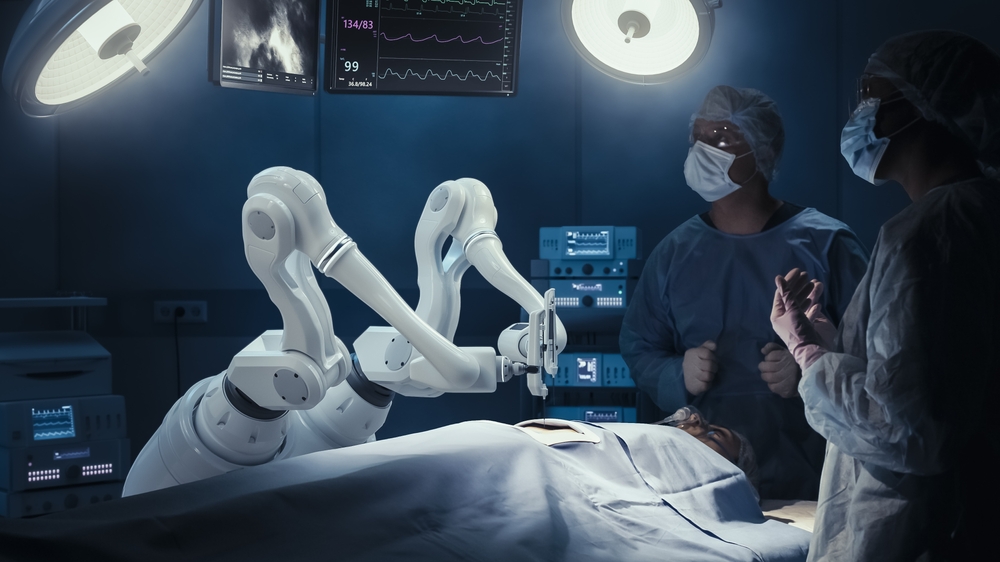WORDS DR BALA SUNDARAM MARIAPPAN
 FEATURED EXPERT FEATURED EXPERTDR BALA SUNDARAM MARIAPPAN Consultant Urologist and Console Surgeon Subang Jaya Medical Centre |
Robotic surgery, also called robot-assisted surgery, is a minimally invasive surgical technique that uses robotic arms to perform complex procedures with greater precision and control than traditional methods.
ROBOTIC SURGERY FOR PROSTATE CANCER
In Malaysia, the most used robotic system for prostate cancer surgery is the da Vinci surgical system.
It offers precise control, magnified 3-D vision, and flexible instrumentation, leading to better outcomes and faster recovery for patients.
Robotic surgery systems typically consist of three main components:
- Robotic arms. These are equipped with surgical instruments that are controlled by the surgeon.
- High-definition 3-D camera. This provides the surgeon with a magnified, real-time view of the surgical site.
- Surgeon’s console. This is where the surgeon sits and manipulates the robotic arms and camera using hand and foot controls.
THE ADVANTAGES OF ROBOTIC SURGERY FOR PROSTATE CANCER
Robotic systems offer several key advantages over traditional open and laparoscopic surgery.
- Enhanced precision. Robotic arms have a greater range of motion and dexterity than human hands, allowing for more precise and delicate maneuvers during surgery.
- Magnified 3-D vision. High-definition 3-D cameras provide surgeons with a magnified, real-time view of the surgical site, improving visualization and enabling them to identify and address even the smallest details.
- Minimally invasive approach. Robotic surgery often involves smaller cuts or incisions compared to traditional open surgery, leading to less pain, faster recovery times, and reduced scarring.
- Reduced risk of complications. Smaller incisions and greater precision can help minimize the risk of bleeding, infection, and other complications associated with open surgery.
- Improved patient outcomes. Robotic surgery has been shown to lead to better outcomes in many cases, including shorter hospital stays, less pain, and faster return to normal activities.
These features make robotic surgery a valuable tool for surgeons, allowing them to perform complex procedures with greater accuracy, control, and efficiency.
LIMITATIONS OF ROBOTIC SURGERY
- Severity of the cancer. In cases of advanced or aggressive prostate cancer, traditional open surgery might be more appropriate to ensure complete removal of the tumour.
- Patient’s body. Patients who are obese or have a large prostate may be better suited for traditional open surgery, as robotic surgery can be more challenging in these cases.
- Previous surgeries in the pelvic area can make it more difficult to perform robotic surgery, potentially increasing the risk of complications.
MY ADVICE FOR THOSE PREPARING FOR ROBOTIC SURGERY
Things You Should Do
- Communicate openly with your doctor. Discuss any concerns or questions you have about the surgery, including your medical history, current medications, and any allergies.
- Follow pre-operative instructions carefully. These instructions may include specific dietary restrictions, medication adjustments, and bowel preparation.
- Make sure that your home is safe and comfortable for your recovery. This may include removing tripping hazards, having necessary supplies on hand, and arranging for help with household chores.
Take Note
- Don’t stop taking any medications without consulting your doctor. Some medications may need to be adjusted or stopped before surgery.
- Don’t eat or drink anything after midnight the night before surgery. This is to ensure that your stomach is empty during surgery.
- Don’t hesitate to ask questions Your doctor and the surgical team are there to help you, so don’t be afraid to ask any questions you have.














